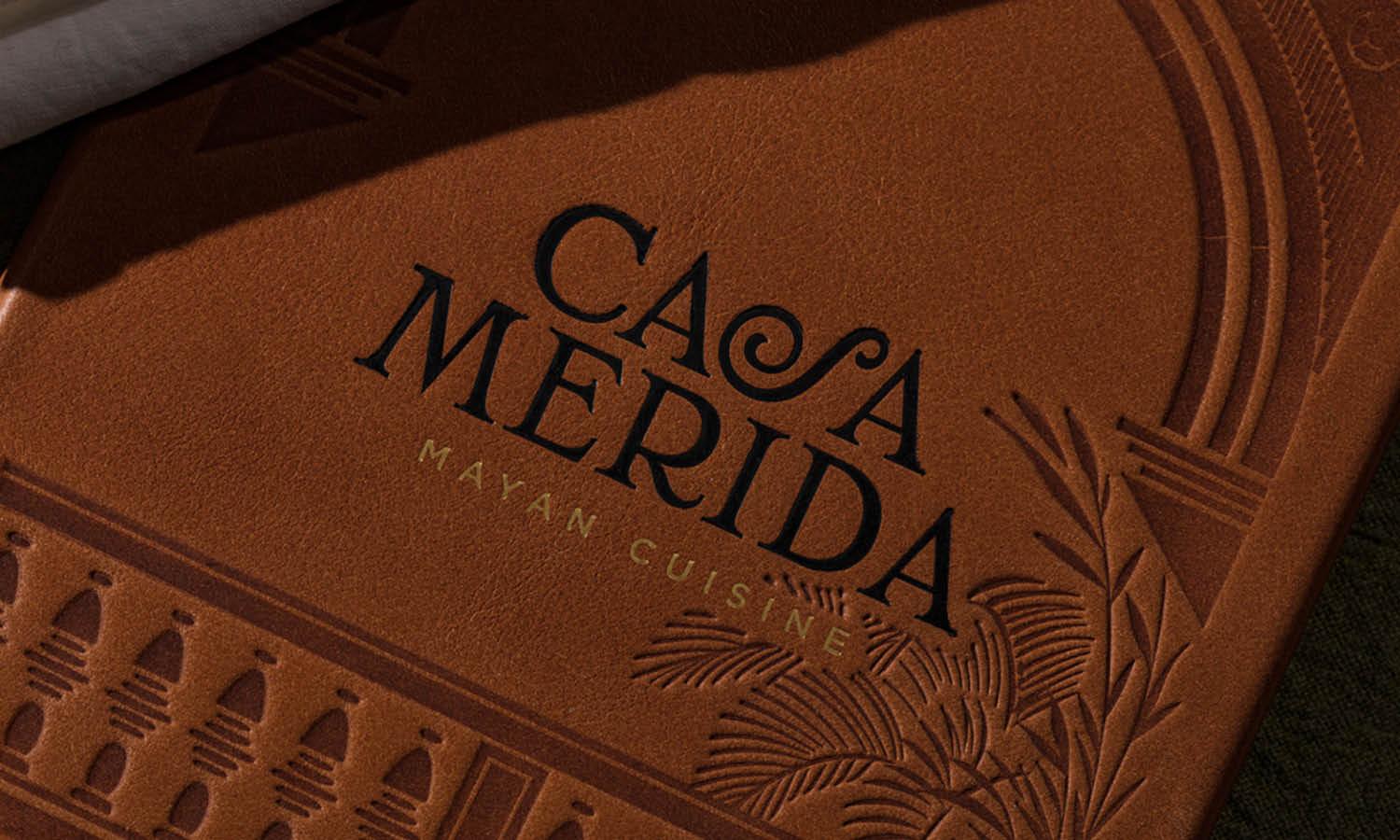Reasons Why Circle Logo Design Is More Powerful

Source: Only1Mehedi, Onid Logo Design - App Logo, Behance, https://www.behance.net/gallery/122233743/Onid-Logo-Design-App-Logo
In the realm of logo design, the choice of shape can profoundly influence a brand's perception and identity. Among the various shapes available, the circle stands out as a particularly powerful tool in logo creation. Circle logo designs are not only visually appealing but also rich in symbolism and versatility. They encapsulate ideals such as unity, continuity, and protection, resonating deeply with consumers on a subconscious level. This universal shape transcends cultural and linguistic barriers, making it a favored choice for global brands seeking to convey a message of inclusivity and endless possibility.
Moreover, its geometric perfection and simplicity allow for endless creative interpretations, adapting seamlessly to a multitude of branding strategies. As we delve deeper into the reasons behind the effectiveness of circle logo designs, it becomes clear that this shape can offer unique advantages in crafting a memorable and impactful brand identity.
Symbolism of Unity and Inclusivity
Circle logo designs inherently symbolize unity and inclusivity, making them a powerful choice for brands aiming to project a message of togetherness and collective harmony. The circular shape has no beginning or end, which intuitively communicates the idea of connectedness and community. This makes circle logos particularly appealing to organizations that prioritize social unity or are involved in community-centric initiatives. By adopting a circle in their logo design, companies can visually express their commitment to bringing people together, fostering a sense of belonging among consumers.
Additionally, the inclusive nature of the circle, embracing all within its bounds, reflects a brand’s approach to diversity and universal acceptance. These logos resonate on a deeper emotional level, appealing to the universal human desire for connection and community. As such, circle logo designs not only serve as a brand identifier but also as a symbol of the brand’s values and ethos, enhancing consumer relationships through shared ideals.
Endlessness and Perpetuity
The circle is a profound symbol of endlessness and perpetuity, qualities that are effectively communicated through circle logo designs. This shape, with its continuous loop, suggests infinity and ongoing cycles, making it an ideal choice for brands that wish to emphasize longevity and timeless values. Circle logos convey a sense of enduring presence and reliability, assuring customers of the brand's stability and permanence. For companies in industries such as finance, technology, or healthcare, where trust and dependability are paramount, a circle logo can reinforce their commitment to enduring service and constant innovation.
The visual representation of a circle as never-ending is compelling, aligning with businesses that aim for continual growth and renewal. This symbolism is not only relevant but also vital in an ever-evolving market where brands strive to demonstrate their ongoing relevance and unwavering commitment to their customers. Through its simplicity and profound meaning, a circle logo design encapsulates the essence of perpetual motion and infinite possibility.
Visibility and Recognition
Circle logo designs are exceptionally effective in maximizing visibility and recognition. The geometric clarity and distinctness of a circle make it instantly noticeable and easy to remember. This shape naturally draws the eye, standing out in a sea of complex designs due to its simplicity and completeness. For brands aiming to establish a strong visual presence, incorporating a circle into the logo can enhance brand recall and visibility across various platforms and distances. This is particularly beneficial in environments where quick recognition is critical, such as digital media, roadside signage, and product packaging.
A circle's perfect symmetry ensures that the logo remains balanced and cohesive, regardless of its size or the medium it appears on. This universal recognizability is a key asset in marketing, helping to build a cohesive brand image that consumers can easily identify and associate with positive attributes of the brand. Circle logos not only capture attention but also maintain it, fostering greater consumer engagement and brand loyalty.

Source: Kristian Grljevic, Logos & Marks Vol.1, Behance, https://www.behance.net/gallery/143146011/Logos-Marks-Vol1
Flexibility in Design
The inherent flexibility of circle logo designs makes them a favored choice among designers for their ability to adapt to various branding needs. This shape acts as a versatile canvas that can encapsulate a wide range of concepts and elements, from minimalistic symbols to complex illustrations. Designers can embed additional shapes, text, or symbols within a circle, creating layered meanings or emphasizing certain aspects of the brand. The continuity of the circle allows for seamless integration of different design components, maintaining a coherent and unified appearance. This adaptability extends to various stylistic interpretations, whether modern and sleek or traditional and classic, ensuring that the circle logo can evolve with the brand over time.
Moreover, the scalability of circle logos is a significant advantage. They maintain their integrity and impact whether displayed on a large billboard or as a small icon on a smartphone screen. This flexibility not only enhances the creative possibilities but also ensures that the logo can be effectively used across all branding touchpoints, reinforcing the brand's identity in every consumer interaction.
Cultural Significance Across the Globe
The circle holds profound cultural significance across the globe, making circle logo designs especially potent in communicating universal values. Historically, circles have represented notions of totality, wholeness, and infinity in various cultures, from the mandalas of South Asia symbolizing spiritual journeys to the stone circles of Celtic cultures denoting community gatherings. This widespread cultural resonance can enhance a brand's global appeal, making a circle logo design a strategic choice for businesses aiming to connect with diverse audiences. For instance, a circle can signify harmony in East Asian cultures, perfection in ancient Greek philosophy, and the cycle of life in Native American traditions.
By employing a circle in their logos, companies tap into these deep-seated associations, imbuing their brand identity with a richness that resonates on a more profound level with consumers around the world. This not only helps in establishing an emotional connection but also fortifies the brand’s presence internationally, providing a visual language that transcends linguistic barriers and cultural differences.
Versatility Across Industries
Circle logo designs exhibit remarkable versatility across a wide range of industries, demonstrating their effectiveness in various business contexts. This adaptability is crucial for industries as diverse as technology, healthcare, education, and food services. For technology companies, the circle can represent innovation and continuity; for healthcare, it conveys compassion and wholeness; in education, it symbolizes unity and continuous learning; and in the food industry, it often stands for completeness and satisfaction. The circular shape works seamlessly from corporate logos to product brands, offering a consistent identity that is both professional and inviting. Its simplicity allows for high adaptability without losing the essence of the brand, ensuring that regardless of the market, the circle logo remains effective and relevant.
This universality makes it an ideal choice for both established companies seeking to maintain their presence and new businesses looking to make a strong first impression. The circle's ability to mold to the ethos and aesthetics of any industry while maintaining its core symbolism is a testament to its enduring popularity in logo design.
Effective Use of Space
Circle logo designs excel in making effective use of space, which is a critical aspect of visual identity. The circular form naturally fits within squares and rectangles, which are the most common layouts for digital and print media. This compatibility ensures that circle logos can be easily integrated into various formats without losing visual impact or requiring additional design modifications. The shape’s ability to centrally focus attention also maximizes the impact of the space it occupies. In digital applications, where screen real estate is precious, the clean and balanced nature of a circle ensures that the logo remains prominent and memorable even when scaled down.
For physical media, such as business cards or billboards, the circular shape helps in creating a visual anchor, drawing viewers’ eyes directly to the brand’s symbol. This strategic use of space makes circle logos not only aesthetically pleasing but also functionally superior, enhancing the overall brand strategy.

Source: Iframe Design Studio, Logos & Marks 2021, Behance, https://www.behance.net/gallery/144373881/Logos-Marks-2021
Enhanced Brand Memorability
The unique nature of circle logo designs significantly enhances brand memorability. The psychological impact of circular shapes, which are often perceived as harmonious and comforting, makes them more memorable to consumers. This is crucial in a crowded market where distinctiveness and quick recognition are key to a brand’s success. Circle logos are easily recalled because of their simple and closed boundary, which helps in creating a lasting visual imprint in the viewer's mind.
Additionally, the versatility of circle logos allows brands to imbue them with colors, textures, and patterns that further aid in recall. This adaptability ensures that the logo can evolve without losing its recognizability, keeping the brand fresh and relevant in the minds of consumers. Brands utilizing circle logos benefit from increased recognition and recall rates, which are vital for building customer loyalty and competitive advantage. By leveraging the psychological benefits of circles, companies can craft a memorable identity that resonates deeply with their target audience.
Optimal for App Icons and Digital Media
Circle logo designs are especially optimal for app icons and digital media, where distinctiveness and clarity at small sizes are crucial. The rounded nature of circle logos fits perfectly within the square or circular icon spaces typically used on mobile and desktop platforms, ensuring that the logo maintains its integrity and visibility in digital environments. This geometric compatibility is essential in the digital age, as a well-designed app icon can significantly enhance user engagement and brand recognition.
Additionally, circle logos scale well without losing detail, making them ideal for responsive design across devices. This scalability ensures that whether on a smartwatch, smartphone, or desktop, the logo remains clear and recognizable. The simplicity and compactness of circle logos allow for quicker loading times and better performance on digital platforms, which is vital for maintaining a seamless user experience.
Moreover, the psychological appeal of circles, associated with unity and completeness, resonates well in digital formats, where clean and uncluttered visuals are preferred. This makes circle logos not only a practical choice for digital applications but also a strategic one, enhancing the overall digital branding strategy.
Strategic Use in Brand Mergers
Circle logo designs play a strategic role in brand mergers, symbolizing unity and integration. The inclusive shape of the circle can effectively represent the coming together of different entities under a single brand umbrella. In mergers, the circular form can be used to blend various logo elements from merging companies into a cohesive and harmonious new identity. This helps in maintaining brand equity and customer loyalty while minimizing the visual disruption often associated with mergers. The seamless nature of circle logos allows for a smooth transition, as they can incorporate multiple aspects without appearing cluttered or disjointed.
The symbolism of continuity and wholeness conveyed by circles reassures stakeholders and customers of the merged entity’s strength and unified vision. Employing a circle logo in a merger scenario can thus facilitate a smoother integration process, by visually communicating the merger’s benefits and the combined company’s renewed focus. This strategic use of circle logos not only aids in the aesthetic aspects of brand merging but also plays a crucial role in the strategic branding efforts post-merger, ensuring a stronger and more unified brand presence.
Conclusion
The power of circle logo design lies in its simplicity, versatility, and deep symbolic value. Whether used to enhance brand visibility, convey cultural values, or integrate seamlessly into digital media, the circular form offers numerous benefits that can elevate a brand's identity. Adopting a circle logo design not only supports a brand's visual communication but also strengthens its recognition and recall across various platforms and industries. For businesses looking to make a lasting impression and foster a strong connection with their audience, the circle logo emerges as a compelling and effective choice.
Let Us Know What You Think!
Every information you read here are written and curated by Kreafolk's team, carefully pieced together with our creative community in mind. Did you enjoy our contents? Leave a comment below and share your thoughts. Cheers to more creative articles and inspirations!
















Leave a Comment